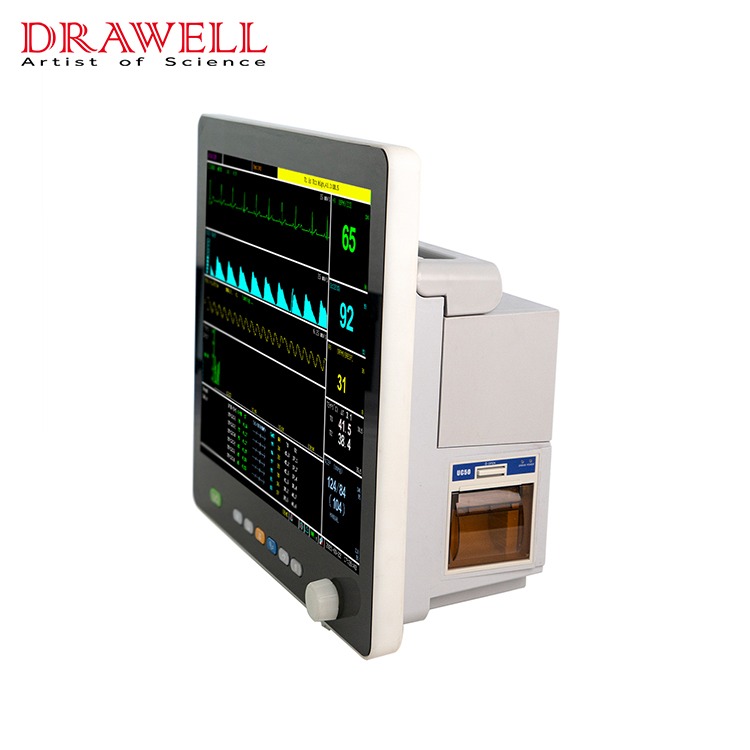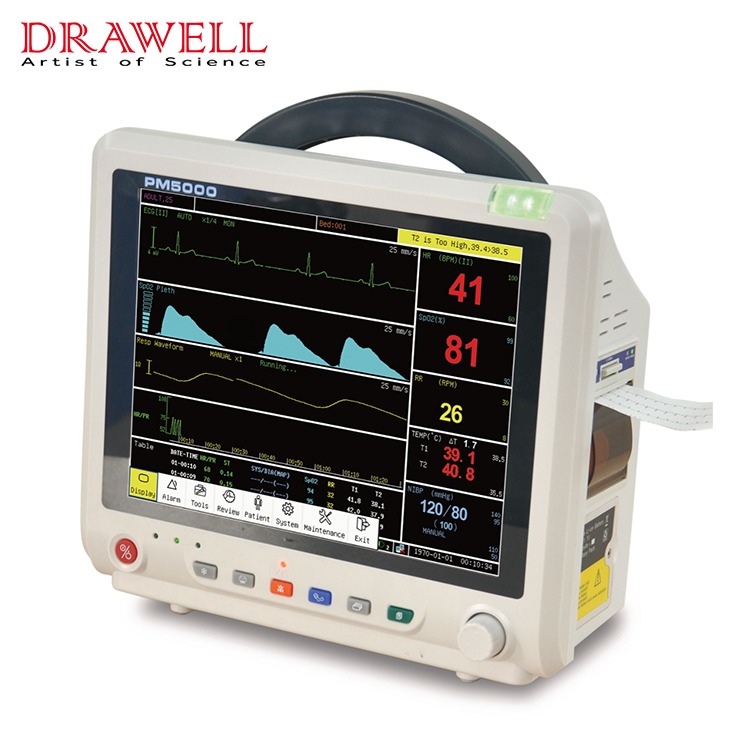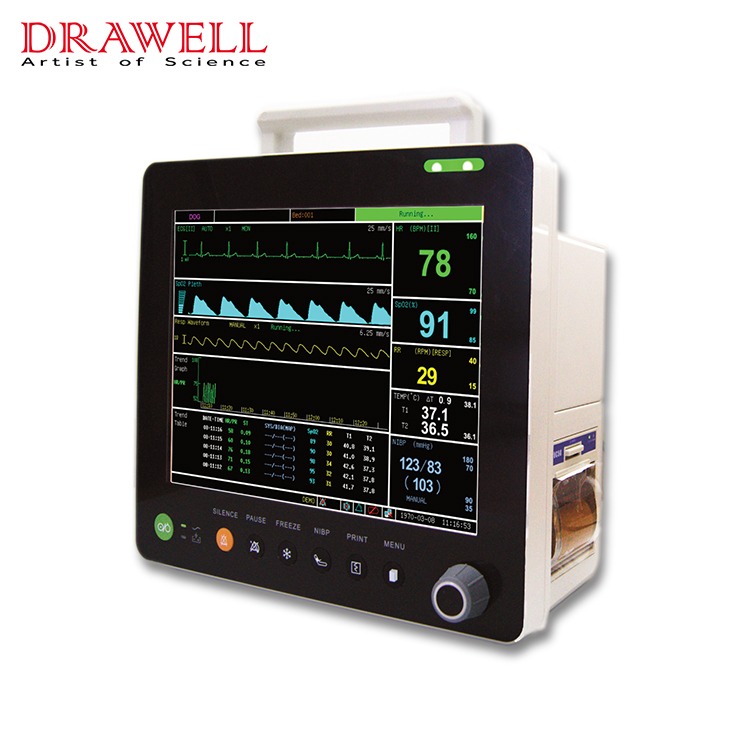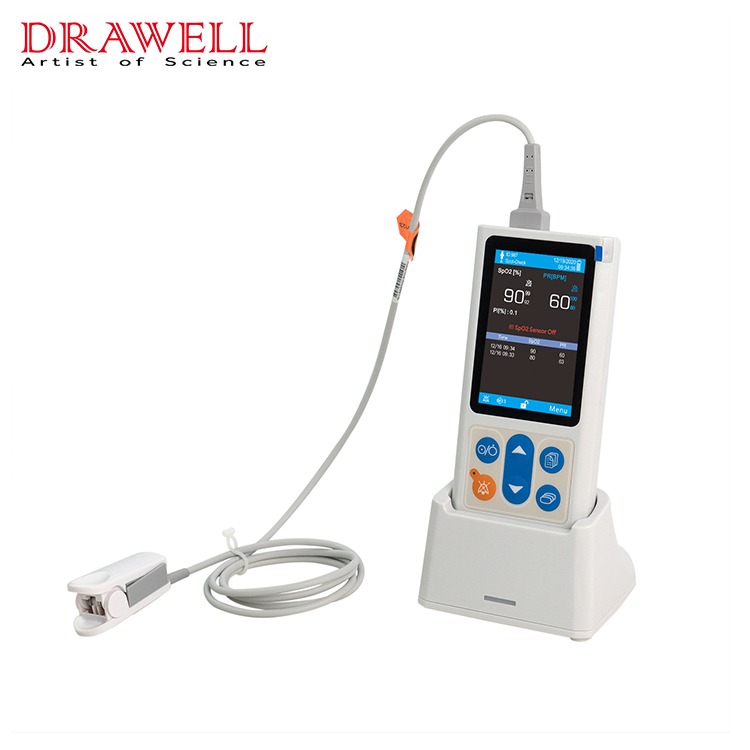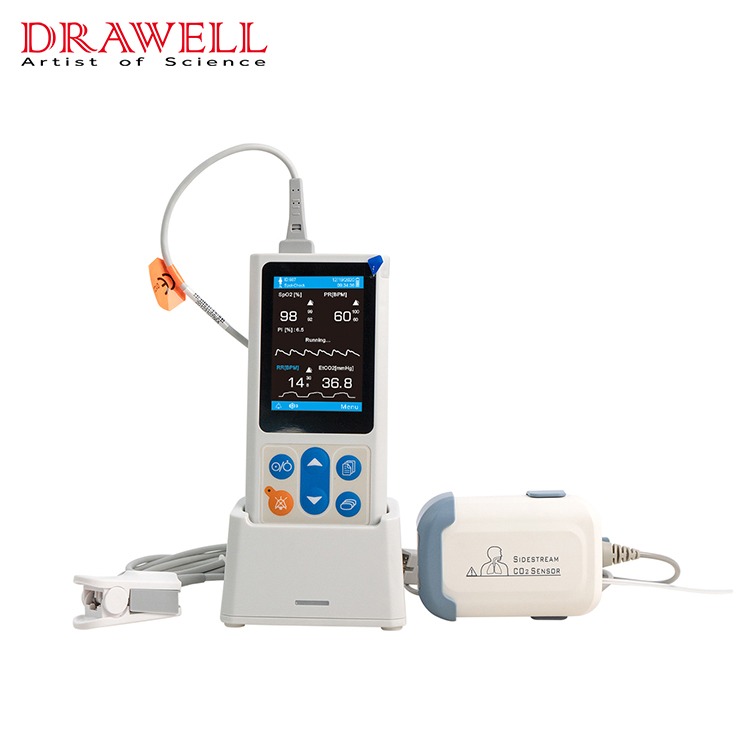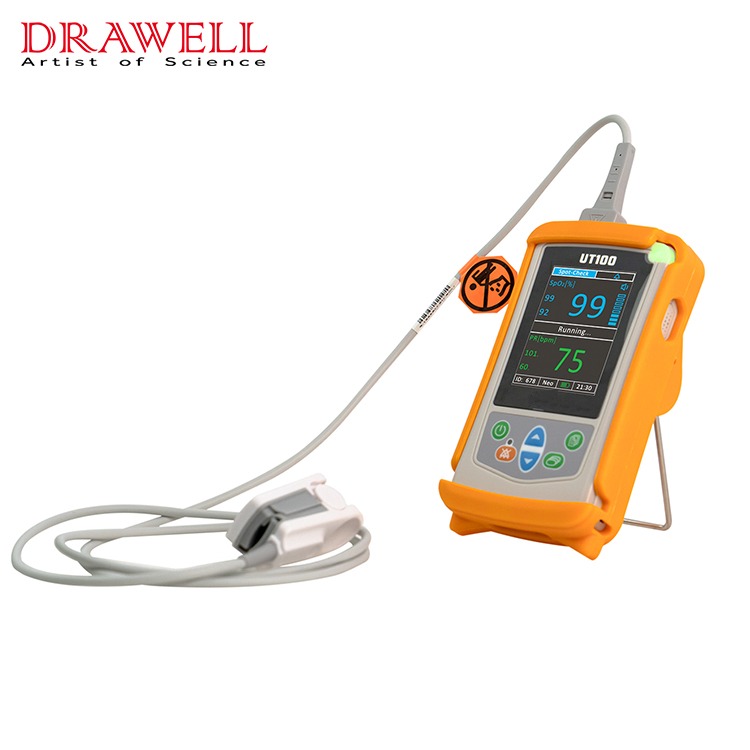When you use the patient monitor, you may need different problems. Today, this article will show you 5 common faults of patient monitoring equipment and the method of handling these problems.

1. The Patient Monitor Turns On And There Is No Display
Symptoms:
When the patient monitoring equipment is turned on, there is no display on the screen, and the indicator light is off. When the external power supply is connected, the battery voltage is low and the alarm is issued, and then the machine automatically shuts down. When the external power supply is not connected, the battery voltage is low and the alarm is issued, and then automatically shuts down, even if the patient monitor is charged, there is no display.
Inspection Method:
- When the patient monitoring equipment is not connected to AC, check whether the 12V voltage is low. This fault alarm indicates that the output voltage detection part of the power board detects a low voltage, which may be caused by a fault in the detection part of the power board or a fault in the output of the power board, or it may be caused by a fault in the back-end load circuit.
- When the battery is installed, this phenomenon indicates that the patient monitor is working on the battery and the battery power is basically used up, and the AC input is not working normally. The possible reason is that the 220V power socket itself has no power or the fuse is blown.
- When no external battery is connected, it may be judged that the rechargeable battery is broken, or the power board/charging control board of the patient monitor is faulty and the battery cannot be charged.
Elimination Method:
Connect all the connecting parts securely, and connect the AC to charge the patient monitoring equipment.
2. The Patient Monitor has A White Screen or A Blurred Screen
Symptoms:
When the patient monitor is turned on, there is a display, but a white screen or a blurred screen appears.
Inspection Method:
The white screen and blurred screen of the patient monitor indicate that the display screen is powered by the inverter, but there is no display signal input from the main control board. You can connect an external display to the VGA output port on the back of the patient monitor. If the output is normal, the screen may be broken or the connection between the screen and the main control board may be poor. If there is no VGA output, the main control board may be faulty.
Elimination Method:
Replace the display, or check whether the wiring of the main control board is secure. When there is no VGA output, the main control board needs to be replaced.
3. ECG No Waveform
Symptoms:
When the lead wire is connected but there is no ECG waveform, the display shows “Electrode off” or “No signal received” on the patient monitor.
Inspection Method:
First, check the lead mode. If it is a five-lead mode but uses a three-lead connection, there must be no waveform.
Next, confirm the placement position of the cardiac electrodes. If there is no problem with the quality of the ECG electrodes, exchange the ECG cable with those on other machines to confirm whether the ECG cable is faulty, the cable is aging or the pin is broken. If the failure of the ECG cable is excluded, the possible cause is that the ECG signal line on the parameter socket board is not in good contact, or the ECG board, the main control board connection line of the ECG board, and the main control board are faulty.
Elimination Method:
- Check whether there is continuity between the three or five extension wires from the external parts of all ECG leads that are in contact with the human body to the corresponding three or five contact pins on the ECG plug. If the resistance is infinite, it indicates that the lead wires are broken. The lead wire should be replaced.
- If the waveform channel of the ECG display shows “no signal reception”, it means that there is a problem with the communication between the ECG measurement module and the host. If there is still this prompt after turning it off and on again, you need to contact patient monitor manufacturers.

4. The ECG waveform on the patient monitor is cluttered
Symptoms:
The ECG waveform has a lot of interference, and the waveform is irregular and non-standard.
Inspection Method:
(1) First of all, the interference from the signal input terminal should be eliminated, such as patient movement, failure of ECG electrodes, aging of ECG lead wires, and poor contact.
(2) Turn the filter mode to “monitoring” or “surgery”, the effect will be better because the filter bandwidth in these two modes is wider.
(3) If the waveform effect is not good in the “surgery” mode, please check the neutral ground voltage. Generally, it is required to be within 5V. You can pull a ground wire separately to achieve the purpose of good grounding.
(4) If the grounding does not work, it may be due to interference from the inside of the machine, such as poor shielding of the ECG board. At this time, you should try to replace the accessories.
Elimination Method:
Adjust the ECG amplitude to an appropriate value, and the entire waveform can be observed.
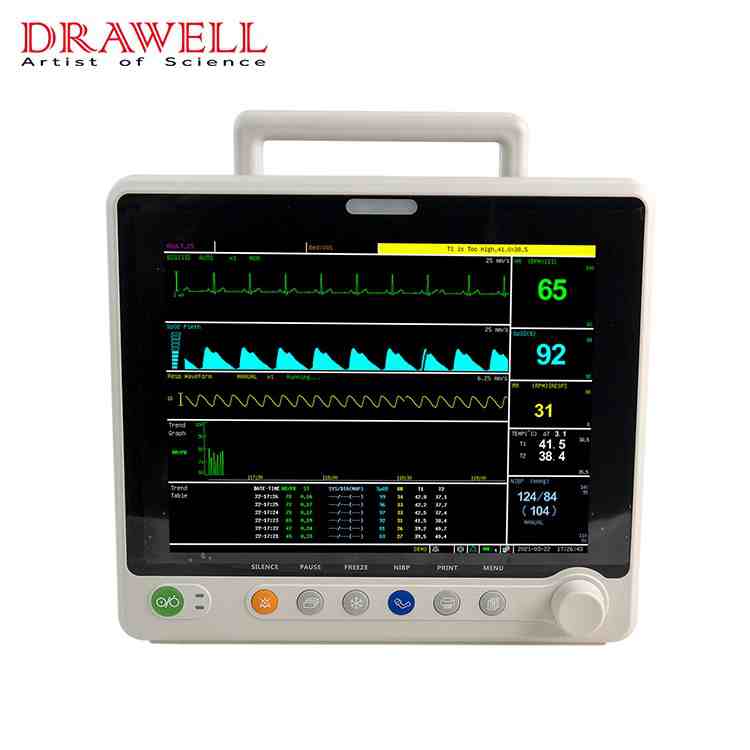
5. ECG Baseline Drift in Patient Monitors
Symptoms:
The ECG baseline cannot be stabilized within the display and sometimes drifts out of the display area.
Inspection Method:
(1) Whether the environment in which the patient monitor is used is humid, and whether the interior of the instrument is damp;
(2) Check the quality of the electrodes and whether the parts of the human body that touch the electrodes are cleaned.
Elimination Method:
(1) Turn on the patient monitoring equipment continuously for 24 hours to drain the moisture by itself.
(2) Replace the electrode sheet with a good one, and clean the part of the human body that contacts the electrode sheet.
6. Respiration signal on the patient monitor is too weak
Symptoms:
The respiratory waveform displayed on the screen is too weak to observe.
Inspection Method:
Check whether the ECG electrodes are placed correctly, the quality of the electrodes and whether the parts of the human body that touch the electrodes are cleaned.
Elimination Method:
Clean the parts of the human body that are in contact with the electrodes, and place good quality electrodes correctly.

